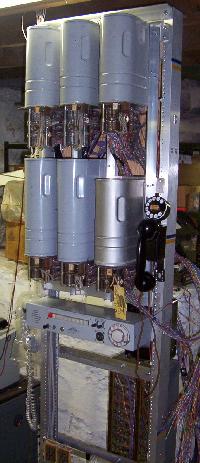 |  25 September -- Lots of progress on the switch! The completed selector contact banks were bolted onto the switches. Temporary connections
to the connectors was made to the new bank wiring and tested -- it works! The switch can now support two simultaneous connections.
The cable bundles to the banks still need to be dressed and terminated properly, so in the photo at left you can see the wires hanging out the right
side of the switch.
25 September -- Lots of progress on the switch! The completed selector contact banks were bolted onto the switches. Temporary connections
to the connectors was made to the new bank wiring and tested -- it works! The switch can now support two simultaneous connections.
The cable bundles to the banks still need to be dressed and terminated properly, so in the photo at left you can see the wires hanging out the right
side of the switch.
An interesting rack-mounted telephone, made by Allentel and pictured at the right, was discovered and purchased and mounted on the switch frame. It can be seen
below the switches in the photo. The phone is basically a 1A2 multi-line telephone, with a speakerphone component and the capability
of plugging in a standard telephone headset, or using the attached handset. I don't know if these were ever used in switch rooms, but
it looks like it *should* be there! |
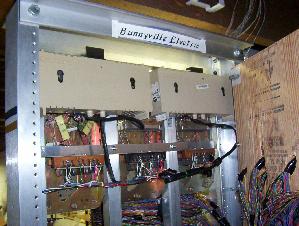

 25 September -- Lots of progress on the switch! The completed selector contact banks were bolted onto the switches. Temporary connections
to the connectors was made to the new bank wiring and tested -- it works! The switch can now support two simultaneous connections.
The cable bundles to the banks still need to be dressed and terminated properly, so in the photo at left you can see the wires hanging out the right
side of the switch.
25 September -- Lots of progress on the switch! The completed selector contact banks were bolted onto the switches. Temporary connections
to the connectors was made to the new bank wiring and tested -- it works! The switch can now support two simultaneous connections.
The cable bundles to the banks still need to be dressed and terminated properly, so in the photo at left you can see the wires hanging out the right
side of the switch.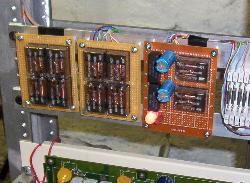 17 October -- The external trunk circuit board was installed and wired on the switch frame today. While not a true "repeating trunk"
it does provide access to an external telephone loop. Two circuits were built on the board some months ago (see 25 July) and one was wired to the "real" phone line
into the house and the circuit was attached to the "9" level on the selectors. Dialing 9 from any step station draws dial tone from the CO.
17 October -- The external trunk circuit board was installed and wired on the switch frame today. While not a true "repeating trunk"
it does provide access to an external telephone loop. Two circuits were built on the board some months ago (see 25 July) and one was wired to the "real" phone line
into the house and the circuit was attached to the "9" level on the selectors. Dialing 9 from any step station draws dial tone from the CO.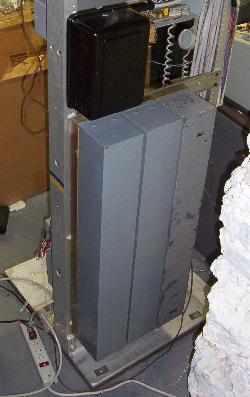
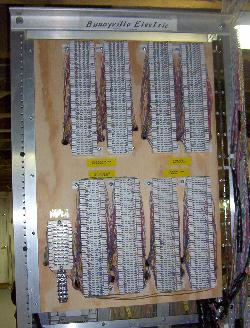
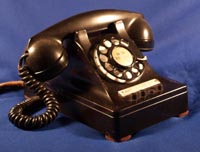 In somewhat related switch news, I have started playing with a pair of old 1B KTUs from a 1A key telephone system. They are intended for use with phones like
my 440, (see left and on my phones page). The plan is to attach two step switch lines to the little box of 1Bs and to that attach the 440
and a 544 telephone I have. It hasn't been a good time for relays in my shop... one of the 1B KTUs was always pulling in to the hold position without even a
telephone attached to it. After an evening and afternoon of puttering with it, it would appear that there was a solder blob or other metallic
debris inside the (L) relay of the problem 1B KTU because eventually something went "klink" inside the relay and everything appears to be working
OK again.
In somewhat related switch news, I have started playing with a pair of old 1B KTUs from a 1A key telephone system. They are intended for use with phones like
my 440, (see left and on my phones page). The plan is to attach two step switch lines to the little box of 1Bs and to that attach the 440
and a 544 telephone I have. It hasn't been a good time for relays in my shop... one of the 1B KTUs was always pulling in to the hold position without even a
telephone attached to it. After an evening and afternoon of puttering with it, it would appear that there was a solder blob or other metallic
debris inside the (L) relay of the problem 1B KTU because eventually something went "klink" inside the relay and everything appears to be working
OK again.